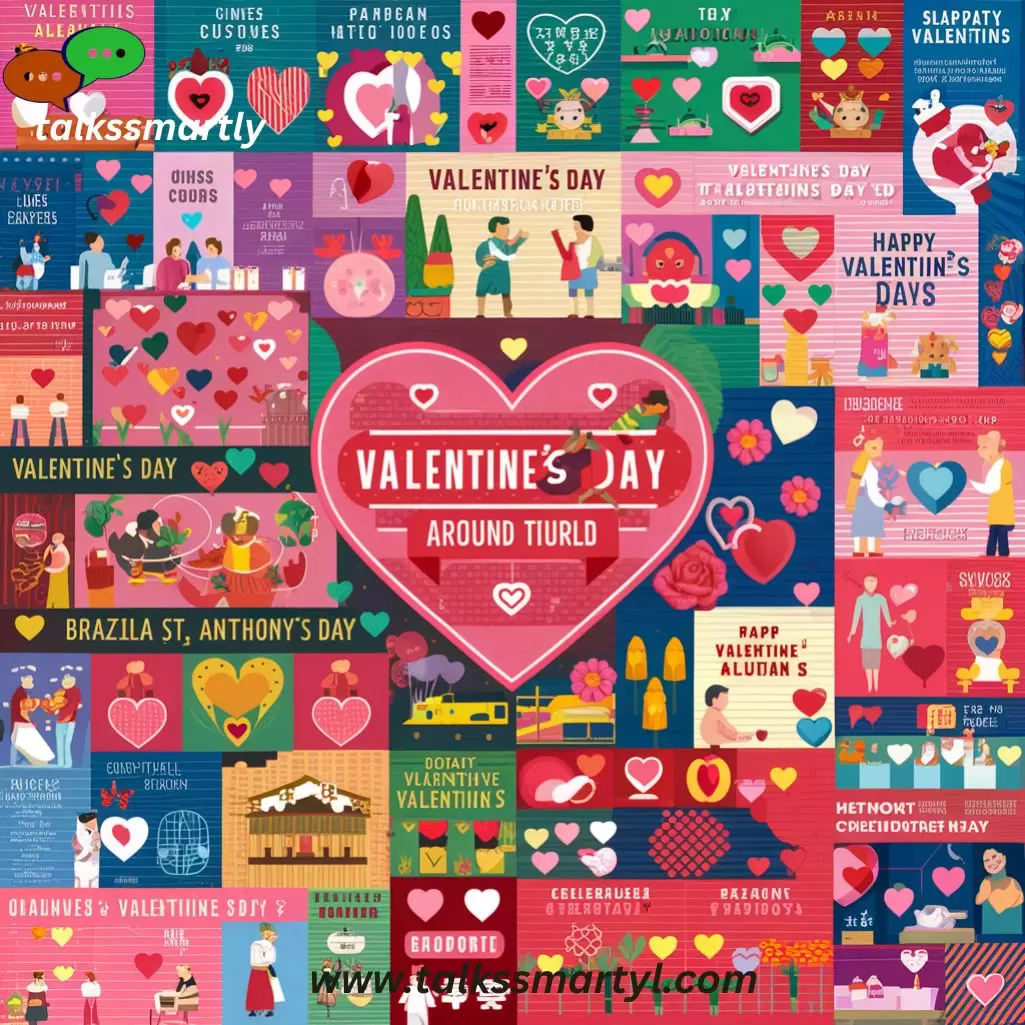Introduction:
“Valentine’s Day is a holiday when people show love and friendship with kind gestures. It started as a Roman festival and evolved into a modern celebration with cards, gifts, and romantic dinners.”
Valentine’s Day, a day filled with romantic gestures and acts of kindness, has a rich history that dates back to ancient times. From its origins as the Roman festival of Lupercalia to its evolution into a modern-day celebration of love and affection, this holiday has captivated people around the world. Despite controversies surrounding its commercialization and exclusivity, Valentine’s Day continues to be a cherished tradition, symbolizing love and compassion for all.
Valentine’s Day is a day when people around the world express their affection for one another with gestures of love and friendship. It’s a day filled with romantic gestures, heartfelt sentiments, and acts of kindness.
But where did this tradition originate? How has it evolved over time? And what are some controversies surrounding it? In this comprehensive guide, we’ll explore the history of Valentine’s Day, its origins, evolution, modern-day customs, cultural variations, and more, aimed specifically at students seeking to understand this holiday.
Overview
Valentine’s Day, celebrated on February 14th, is a global tradition marked by expressions of love and friendship. Its origins trace back to the ancient Roman festival of Lupercalia and the legend of Saint Valentine, a Christian martyr who defied Emperor Claudius II’s ban on marriage.
Over the centuries, the day evolved from a religious observance to a celebration of romance, influenced by medieval beliefs about bird mating seasons and the rise of courtly love. By the 18th and 19th centuries, the exchange of valentines became popular, leading to the holiday’s commercialization.
Today, Valentine’s Day is celebrated worldwide with varying customs, including gift-giving, romantic dinners, and cards. Despite criticisms of its commercialization and exclusivity, the holiday remains a cherished occasion symbolizing love and compassion.
Origins of Valentine’s Day
The origins of Valentine’s Day are shrouded in legend and mystery. One popular belief is that it originated from the ancient Roman festival of Lupercalia, which was celebrated in mid-February. During this festival, men and women would participate in rituals aimed at promoting fertility and warding off evil spirits. Another theory suggests that Valentine’s Day is named after Saint Valentine, a Christian martyr who lived during the third century.
According to legend, Emperor Claudius II of Rome banned marriage for young men, believing that single men made better soldiers. However, Saint Valentine defied the emperor’s decree and continued to perform marriage ceremonies in secret. When his actions were discovered, Saint Valentine was imprisoned and eventually executed on February 14th. Before his death, it is said that he wrote a letter to his jailer’s daughter, signing it “From your Valentine,” thus establishing the tradition of exchanging Valentine’s Day cards.
Evolution of Valentine’s Day Traditions

Over time, Valentine’s Day evolved from a somber religious observance to a celebration of romance and affection. In the Middle Ages, it was commonly believed that February 14th marked the beginning of bird mating season, which added to the holiday’s association with love and fertility. During this period, courtly love became a popular theme in literature and poetry, further contributing to the romantic nature of Valentine’s Day.
The tradition of sending handwritten love notes or valentines gained popularity in the 18th century, particularly in England. These notes were often adorned with lace, ribbons, and symbols of love, and were exchanged between lovers and friends alike. By the 19th century, the industrial revolution made mass-produced valentine cards more affordable and accessible, leading to the widespread commercialization of the holiday.
Spread of Valentine’s Day Celebrations

Valentine’s Day was brought to America by early settlers, but it wasn’t until the 19th century that it became widely celebrated. Esther A. Howland, known as the “Mother of the American Valentine,” is credited with popularizing the exchange of valentine cards in the United States. Howland began producing elaborate handmade valentines adorned with lace, ribbon, and colorful illustrations, which quickly became sought-after tokens of affection.
Today, Valentine’s Day is celebrated in countries around the world, although customs and traditions vary from place to place. While some countries emphasize romantic love, others focus on friendship and appreciation for loved ones in general.
Modern-Day Valentine’s Day Customs

In modern times, Valentine’s Day has become synonymous with romantic gestures such as exchanging gifts, going out for dinner, and sending flowers. Chocolates, jewelry, and perfumes are popular gifts exchanged between lovers, while greeting cards with heartfelt messages remain a staple of the holiday.
Another modern tradition is the celebration of Galentine’s Day, which originated from the television show “Parks and Recreation.” Galentine’s Day, celebrated on February 13th, is a day for women to celebrate their female friendships and show appreciation for the important women in their lives.
Cultural Variations of Valentine’s Day

While Valentine’s Day is celebrated in many countries, cultural variations abound. In Japan, for example, Valentine’s Day is primarily observed by women who give chocolates to men as a sign of affection. A month later, on March 14th, a holiday known as White Day is celebrated, during which men reciprocate by giving gifts to women.
In South Korea, Valentine’s Day is celebrated on three separate occasions: February 14th, March 14th (White Day), and April 14th, known as Black Day. On Black Day, individuals who did not receive gifts on the previous two holidays gather to eat jajangmyeon, a dish of black bean noodles, symbolizing their single status.
Cool Captions for Instagram to Draw Millions of Traffic
Controversies and Criticisms
Despite its widespread popularity, Valentine’s Day is not without controversy. Some critics argue that it has become too commercialized, with retailers capitalizing on consumerism by promoting extravagant gifts and lavish displays of affection. Others criticize the holiday for perpetuating heteronormative ideals of romantic love, excluding those who are single or in non-traditional relationships.
In recent years, there has been growing awareness of the environmental impact of Valentine’s Day, particularly concerning waste generated by gift wrapping, cards, and disposable decorations. Additionally, concerns have been raised about the ethical implications of chocolate production, including child labor and deforestation in cocoa-producing regions.
Teaching Valentine’s Day in Schools

Valentine’s Day is often celebrated in schools as a way for students to express friendship and kindness to their classmates. Teachers may incorporate Valentine’s Day-themed activities into their curriculum, such as craft projects, poetry writing, and history lessons about the origins of the holiday.
However, it’s important for educators to approach the topic with sensitivity and inclusivity, recognizing that not all students may celebrate Valentine’s Day or feel comfortable participating in traditional romantic activities. Encouraging inclusive celebrations that emphasize friendship and kindness can help ensure that all students feel valued and included.
Celebrating Valentine’s Day Responsibly

As Valentine’s Day approaches, it’s important to consider ways to celebrate responsibly and sustainably. Instead of purchasing commercial gifts, consider handmade or personalized gifts that have sentimental value. Opt for sustainable flowers and chocolates that are ethically sourced and produced. Additionally, consider alternative ways to celebrate, such as volunteering or donating to charitable causes in honor of the holiday.
Conclusion
In conclusion, Valentine’s Day is a holiday rich in history, tradition, and symbolism. From origins as an ancient Roman festival to its evolution into a modern-day celebration of love and affection, Valentine’s Day has captured the hearts of people around the world. While its customs and traditions may vary from culture to culture, the underlying message of love and kindness remains universal.
As we celebrate Valentine’s Day, let us remember to embrace its true spirit by expressing love and appreciation for those who enrich our lives. Whether it’s through heartfelt valentine cards, thoughtful gifts, or simple acts of kindness, let us strive to make this holiday a time of joy, connection, and compassion.
But let us also be mindful of the potential pitfalls of commercialization and exclusion, and strive to celebrate Valentine’s Day in a way that is inclusive, sustainable, and responsible. By doing so, we can ensure that Valentine’s Day remains a cherished tradition for generations to come.
So, whether you’re celebrating with a romantic partner, spending time with friends, or simply indulging in self-love, may your Valentine’s Day be filled with warmth, happiness, and love.












